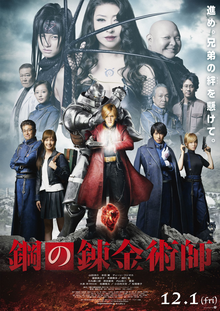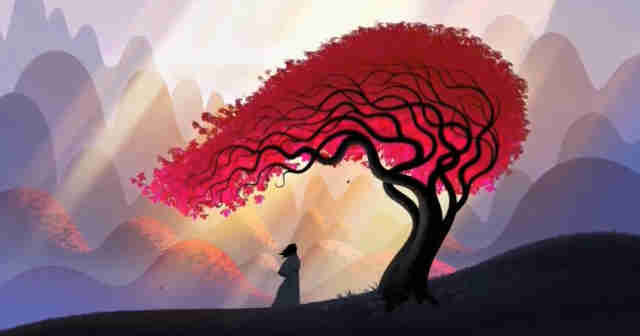After Purdum’s bitter resignation from the project,
Katzenberg sought after a new director to lead the production team toward the
film’s new vision. Initially, the studio asked Ron Clements and John Musker;
who recently completed production on The
Little Mermaid. Unfortunately, they both declined since they were both
exhausted from working on the previous project. Instead, Disney asked rookie
directors Kirk Wise and Gary Trousdale (who would later become the directors of
The Hunchback of Notre Dame). Before Beauty and the Beast, the duo directed
sections of EPCOT’s Cranium Command
attraction. To create a “Broadway Musical” feel similar to Mermaid, Alan Menken and Howard Ashman were hired once again. The
latter also served as an unofficial director on the project, despite
experiencing severe health problems and working on a project of his own; an
adaptation of Aladdin. To accommodate
Ashman’s health, the production team moved from their original location in London
to Fishkill, New York. It was at this point which Ashman, Menken, Trousdale,
and Wise worked to retool the original script with Don Hahn and Linda
Woolverton.
To give
the film a lighter tone than Cox and Purdum’s earlier drafts, the once-mute
enchanted objects were given distinct identities and personalities, to serve as
“guides” for the audience and as comic relief. Gaston returned from Purdum’s
version, albeit in a drastically altered form; instead of being a foppish
marquis, he was changed into a narcissistic hunter and “town-hero”-type of
character. To quote Belle in the final film, this new version of the character
was “boarish” and “brainless”. He was also given a sidekick in the form of
LeFou, whose name fittingly translates to “the fool”. Belle and Beast’s
personalities were also given a drastic overhaul, adding more development to
their characters. In addition to being a simple peasant, Belle was also made a
bookworm; she was fascinated by the worlds that books could show her, such as
those that included “daring swordfights, magic spells, a prince in disguise”.
Unfortunately, she and her father (who was once again an inventor) would be
ostracized by their fellow villagers because of their lifestyles. Belle became
an outcast amongst her peers, since she now preferred to read rather than what
is typically expected of a woman in the village. One could say her intelligence
made her stand out from the crowd. The Beast’s overall development as a
character can be attributed to the ideas of Howard Ashman, such as reducing the
character’s age and starting the film with a prologue that explains the cause
of his grotesque transformation. In this new version, an arrogant prince
refuses to let an old beggar woman seek shelter, purely based on her appearance
and her small gift of a red rose. As a result, the old woman transforms into a
beautiful enchantress; cursing the inhabitants of the prince’s castle. To raise
the overall stakes, the same rose given by the enchantress served as a timer; “If
he could learn to love another and earn her love in return by the time the last
petal fell, then the spell would be broken. If not, he would be doomed to
remain a beast for all time.” Essentially, this added a “race against time”
element to the love story. The Beast has to learn how to love and be loved by
the time the rose completely wilts. According to a 1990 draft, the team
initially decided on a fully-animated prologue, which also included a chase
sequence of the Enchantress trying to cast her spell on the prince; accidentally
hitting the servants along the way. The animated prologue was (of course),
abandoned in favor of the one seen in the final film. The same beggar was also
planned to appear at the end of the initial draft, with the young royal and Belle
meeting her as they leave the castle on a stagecoach. Comparing this draft to
the final one, the story was nearly identical aside from some minor scenes
being cut (such as Gaston and Lefou travelling to the Maison des Lunes) along
with some musical numbers being added, one being shifted, and one being cut entirely.
The first
song Menken and Ashman wrote for the film served the purpose of introducing the
female lead, as she goes about her day in the small village near her home. The late
Ashman once said in an interview, “In almost every musical ever written, there’s
a place, it’s usually the third song of the evening. Sometimes it’s the second,
sometimes it’s the fourth, but it’s quite early. The leading lady usually sits
down on something, sometimes it’s a tree stump in Brigadoon, sometimes it’s under the pillars of Covent Garden in My Fair Lady, or it’s a trash can in Little Shop of Horrors, but the leading
lady sits down on something and sings about what she wants in life…” (Howard
Ashman, Waking Sleeping Beauty) Belle was no exception, and introduces the
audience to the “Beauty” of the story. The song was later reprised, further
developing the character and revealing how trapped she felt in the village. Personally,
these two numbers are my favorites in the film. To further develop the castle
staff, the duo wrote a showstopper known as Be
Our Guest, which would be performed when Belle’s father initially enters
the castle. However, the team felt the sequence would have a greater impact if
shifted to the point when Belle is in the castle instead of her father. Their
development would be further expanded using the song “Human Again”, to be performed after Belle and Beast rescue each
other from the wolves. As production progressed, Human Again would be cut in favor of a song that developed Belle
and Beast’s relationship instead, titled Something
There. Of course, these two needed a song that served as a culmination of
both characters’ arcs, which is where the title song Beauty and the Beast comes in.
However, Human Again would later be added to the stage musical and reworked
into the film’s 2001 IMAX release. They also needed a song or two for their
villain, Gaston; the circumstances surrounding him being an interesting case.
Typically, Disney villains would be
given a single song (and sometimes a reprise of that number) to develop their
character. However, Gaston is a unique exception; he was given two villain
songs during production. The first is his self-titled sequence (which fits his egotistical
nature) and its accompanying reprise afterward, and the second is during the
angry mob sequence when Belle returns home; this would later be titled The Mob Song. The latter scene served as
a prelude to the climactic battle and to show Gaston’s psyche coming apart at
the seams; his growing lust for Belle being the only aspect that remained.
Unfortunately, while it seemed
production was moving smoothly as the release date quickly approached; a larger
problem was brewing. Ashman’s health was drastically worsening with each day
that passed; and the team was unsure if he would live to see the end of
production. According to Peter Schneider and John Musker, after a successful
press event to promote the movie, the entire crew “jumped into a cab and we
raced downtown to St. Vincent’s… we were high from it when we came into the cold
shock of Howard dying in a hospital room. His mother pulled back the sheets to show
us the Beauty and the Beast sweatshirt
he was wearing. He was eighty pounds, had lost his sight, and barely had a
whisper of a voice. We shared with him what happened that day and how amazing
it was, and how he was there in every way. Then, when it was time to leave, we
said our goodbyes; before I left, I bent over and whispered ‘Beauty and the Beast was gonna be a
great success. Who’d have thought it’, I said. Howard lit up and whispered, ‘I
would have’.” Ashman passed away on March 14, 1991 and would never see the completed
film. Thankfully, the film was dedicated to him in the end credits. Sadly, things
would have to move on without this idea powerhouse. While Ashman’s passing was
a massive blow to the team’s morale, higher powers blessed them with amazing
opportunities such as presenting a rough cut at the New York film festival on
September 22, 1991. Despite being unfinished, it garnered a massive standing
ovation and hyped the public for the premiere on November 13th of
that same year and the public release nine days later.
From the moment it was released, it
was a critical and box office success, garnering universal critical acclaim and
a total box office gross of 425 million (not including re-releases in 2001 and
2012). In addition to the aforementioned success came various accolades such as
Oscar nominations for Best Original Song, Best Original Score, and Best Picture.
The latter nomination came as a shock to everybody, as an animated film has
never been nominated for that category and would not be again until the
releases of Pixar’s Up and Toy Story 3. While it did not walk away
with an academy award for best picture, it did snag awards for Best Original
Song and Best Original Score. This was far from the end of Beauty and the Beast’s story; on the contrary, it was only
beginning. The film was re-released again in 2001, with the deleted Human Again sequence reintegrated into
the story. However, this version of the
song was based on that which was seen in the 1994 Broadway Musical adaptation
of the film (the latter of which we will be covering in the next chapter of our
tale).



